This page compares:
- 30 lightest bindings that are suitable for light ski mountaineering and rando racing, and are currently on the market
- All under 210g (we believe all weights are provided without screws)
- Technical specs (weight, etc.) are from manufacturers’ websites and other trusted sources
- “ISMF approved” indicates whether a binding complies with ISMF rules


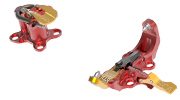
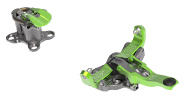
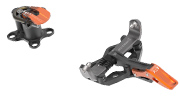
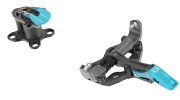
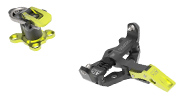
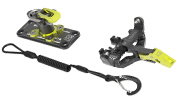
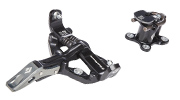
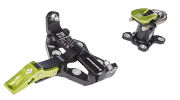
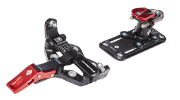
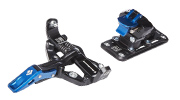
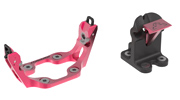
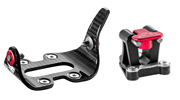
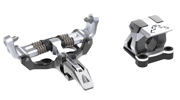
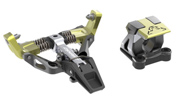
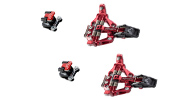
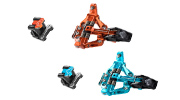
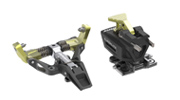
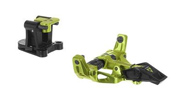
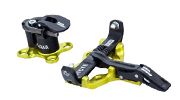
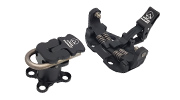
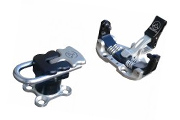
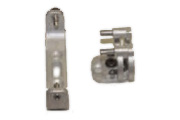
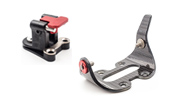
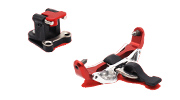
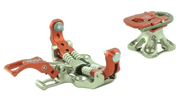
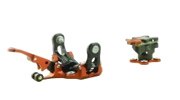
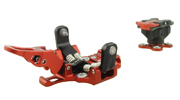
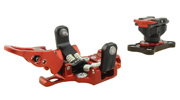
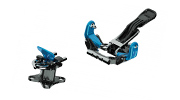
Stano Faban says
Hi John,
Thank you for sharing your experience with us!
Yes I know of that binding, and we are updating this page right now. I have stopped by Kreuzspitze booth at the recent ISPO and they a very knowledgeable and passionate pair of engineers.
John Baldwin says
Excellent list Stano. Have you thought of including the Kreuzspitze GT binding? Its 161g with fully adjustable release, flat on ski mode, optional extra riser etc. I’ve used them for about 100 days on a pair of wider (112mm ) skis and have been loving them for touring. They are available in North America from Skimo.com. The fully adjustable release was the reason I switched to these from a pair of Dynafit Superlite 2s.
Jonathan S Shefftz says
Tom, yes, somehow the spring-less design must work — intriguing!
Testing various “Tech” bindings with the heel pins disengaged was very interesting, especially since I learned how some race bindings are more dependent on the toe than the heel for the lateral retention properties.
Tom says
Jonathan,
It’s an interesting design for sure with the Revolution binding without having the springs. With a large majority of World Cup racers on the ATK Revolution binding it has to have enough strength and force for racers to feel comfortable using it, but it sure would be nice to have details on these kind of measures. There continues to be more details regarding the heel “z” force measures and “DIN”, but not much in regards to the toe pieces.
Jonathan S Shefftz says
“Does anyone know how the front binding clamping strength/force compares between the ATK Revolution, SL Evo or SLR binding in comparison to the Dynafit toe pieces found on the LTR, or LTR 2.0′s?”
yes & no:
– When I used a standard alpine downhill ski binding torque tester on the Hagan ZR rebranded version of the SLR and the Dynafit LTR “1.0”, the results with the heel pins entirely disengaged (i.e., testing toe pincer retention only) between those two models were essentially the same.
– I haven’t tested the LTR 2.0 but when I mounted a pair, although the toe lever is now plastic and lacks the adjustable position of the 1.0, the retention seemed comparable.
– The SL Evo has only one set of pincer springs, and the Revolution has none (how the heck can this possibly work?!), so I’d say my results for the ZR have zero relevance to those models (which I’ve also never seen in person).
Tom says
Does anyone know how the front binding clamping strength/force compares between the ATK Revolution, SL Evo or SLR binding in comparison to the Dynafit toe pieces found on the LTR, or LTR 2.0’s?
Stano Faban says
Stefan, visit this page on ISMF website for application forms and procedures – http://ismf-ski.org/www/?q=node/38&page=WhiteListAction
Stefan says
Hello, is it difficoult to geht the apprived for a new bindings?
How to get a ISMF approved for the bindings? (who does that make)
thanks for your answer
stefan
Jonathan Shefftz says
Skimo Co also carries Plum race bindings that have a very similar part available to provide a higher heel riser position.
However, by “my cross country skis” I sure hope you don’t really mean nordic skis!
Eric Carter says
Josep – as long as the boots you use are tech-compatible, most race options will be a good choice. SKIMO.co carries the Kreuzspitze binding which can have an added heel riser attached to it.
Josep says
Hi! Good comparison! I’m looking for light bindings to mount in my cross country skis, specific for winter mountaniering (ice climbing, colouirs, etc.) I would like them to be durable and have comfortable heel risers – I won’t do any racing with them, it’s just not to have too much weight when carrying them in the backpack! What would be your choice?
thanks!
Lukas says
Very interesting! Thank you Stano!
Stano Faban says
That is correct Jonathan! Will be interesting to see further development in this story.
Jonathan Shefftz says
So if you can’t beat ’em, join ’em — or rather, rebadge them: the PG Ultimate boot and Morpho boot will be rebranded by Dynafit for next season!
Stano Faban says
Peter, in my opinion they better change/simplify rules they cannot or don’t plan on enforcing. As if anyone was ever going to measure that binding-boot gap 🙂
And then I see a change about outside help – seems like now it is legal to receive outside help in terms of a broken ski or a pole, you can receive it from anyone and anywhere! That is a bit strange since you can end up skiing on unsafe equipment which the rules are trying to avoid 🙂
peter k says
just got that email from dD and what I noticed is that they have changed the binding rule AGAIN. They took out the 4mm gap, requirements for ski leashes, and have used less ambiguous wording regarding lateral release.
“ The front part must have a release system that allows the lateral exit of the boot from the rear
part of the binding. The front release system must have a lockable and un-lockable position. ”
My Dynafit lo-tech autos are still on the white list, and it appears they have updated the downloadable regulations to the 2013-14 version. So I’m not sure if anything really changed.
Jed says
I answered my own question with the purchase of the Trab Race adjustable: The whole heel piece turns to give you a flat mode. And the heel piece moves a full 3cm, for what it’s worth…
Stano says
Jed, from what I know I don’t think any of these have a “flat mode”. However, the heel posts are so low that if you have a flexible enough boot (nice ankle movement) you won’t need a flat mode. But I understand your concern. My problem is that for some spring touring it would be nice if I could have a higher post 😉
Jed says
Excellent list! Another question: This one about heel lifts, and it’s not what you’d expect. Do any of these light bindings allow one to go “flat on ski”? For mellower touring? I’m in no need of stilettos, but being able to go flat would be nice for sections…
aviator says
And a whole bunch of new Maruelli M2 toe and heel variations, seems all toes have “2 safety positions” = full ISMF toe releasability?
http://www.maruelli.com/NaturalWalkingPlate/PRICE-LIST/MARUELLI-PRICELIST.pdf
Price is now a whopping 500 euro incl VAT.
You need the traditional 70g m1 toe for downhill races.
m1 toe + m2 heel = 90g and the combo is ISMF approved for downhill?
http://www.skiforum.it/forum/discussioni-generali/63441-se-vi-interessa-un-attacchino-per-le-vertical-race-da-50gr.html
Maruelli is answering questions.
M2 only for vertical races and seems to take a sweet minute to get in and out of, you are actually hand screwing one of the pins in to your outer boot insert?
aviator says
hey everybody!
Brand spanking new Gignoux Ultimate 2 with ISMF toe releasability:
http://www.ski-alpinisme.com/actualite/2013/fixationGignoux2013.pdf (also has Morpho 400g boot closeups)
http://www.ski-alpinisme.com/article.php?id=4682
Stano says
Thanks Jonathan, will fix the price right away.
It seemed very low at 200 Euros for such a binding. 300 is seems more realistic.
Jonathan Shefftz says
Maruelli’s website is now updated for both the M2 and M1-FR … as well as for a 50% price increase in the previously published price for the M2.
Stano says
Updated the bindings’ notes – Plum 135 and both PHK bindings are recommended for maximum 70kg (154 lbs) users. This should be the racer’s weight including anything he or she wears/carries above the bindings (boots, backpack…), I would imagine.
However, this does not mean other bindings have or don’t have such “restrictions”. It simply means that Plum and PHK are doing us a good services of letting us know.
Jonathan Shefftz says
I’m pretty sure that the 70g split is for the Plum 135 vs 145, and is in reference to the lower effective forward release values for the Plum 135 Ti heel fork. (Lateral release values are the same for both bindings.) However, since Ti is stronger than steel, if anything the 135 would be more reliable for a heavier skier, although the 135 heel pins do become notched over time leading to some rattling (but they are replaceable).
The same is probably true of the Dynafit Low Tech race with its Ti heel fork vs the Dynafit Low Tech Radical.
Stano says
Hi James, good question.
During the research I noticed that some had notices about person’s weight. I will go back, collect the info and put it in the notes.
From some that I recall there seem to be 70kg “threshold” that is common – that means that even me would be above, heck, the whole Canadian men’s team would be above 🙂
james minifie says
Great stuff Stan. One question though. Since many people are choosing to use these bindings for other mountain objectives other than racing, are there any indications that any of the models have user weight restrictions. For example, some light race-oriented mountain bike components have weight restrictions (pedals, wheels, tires). As you know, I am a bigger guy but I still like to move fast through the mountains!!!!!